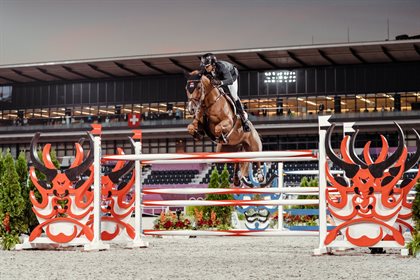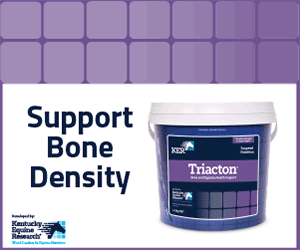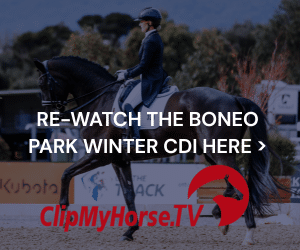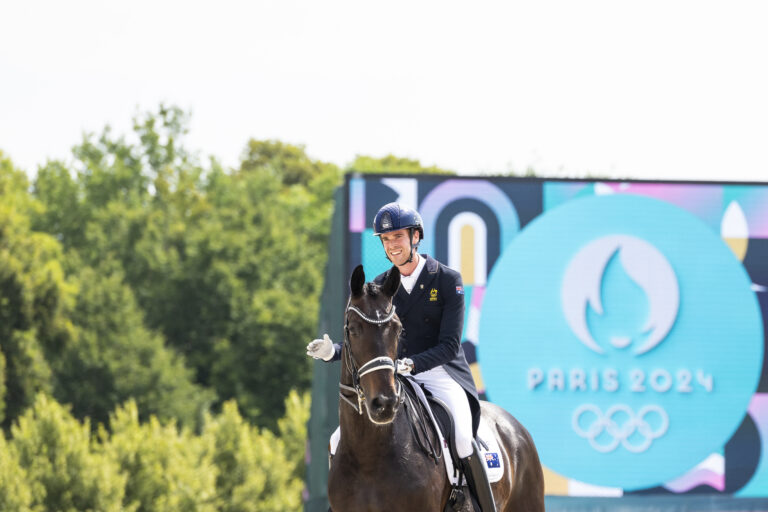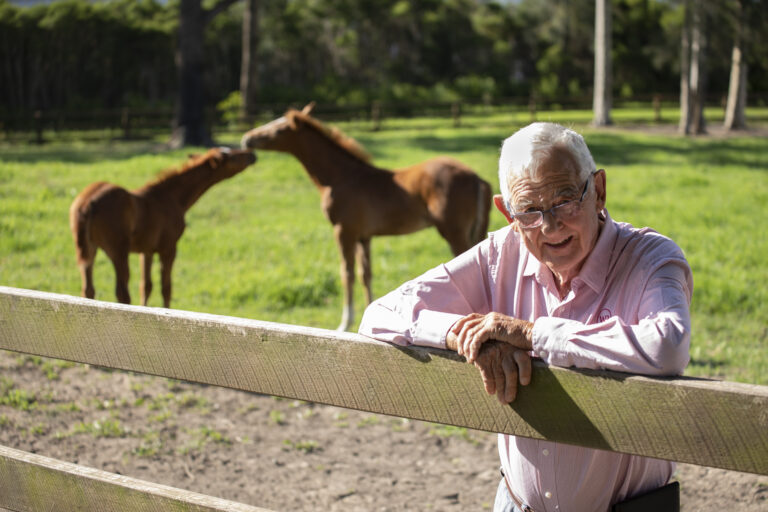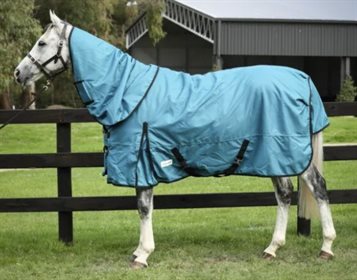This article first appeared in a previous issue of Equestrian Life. To see what’s in the current digital issue click here.
Andrew Hoy and Vassily de Lassos.
© FEI/Christophe Taniére
By Chloe Chadwick
Designing a training program for your next big star can be a daunting process, but with the right preparation, planning and help, you’ll be well on your way. Just ask an expert, like Andrew Hoy.
ANDREW HOY IS a name that is synonymous with Australian eventing, a name that rings with the prestige, excellence and hardiness. Andrew is one of Australia’s all-time greatest athletes and has represented Australia in seven Olympic Games. A master rider and horseman with a wealth of experience, Andrew has designed and implemented successful training regimens for countless horses. Here is what he takes into account when designing a training program for your eventer.
Laying the foundations
“Securing the basics” is the most important step to master, says Andrew, with those simple commands of going forward off the leg, listening to the rein, turning left and right, — though seemingly straightforward — are something Andrew sees many riders paying too little attention to. “I see so many people say ‘Yes I can do all those things’, but then when I ask them to gallop down to a fence at 500 metres per minute, and they tell the horse to wait, the horse doesn’t wait. When you see people reaching for progressively stronger bits, you know that one of those skills isn’t working.”
These basics can be developed in any environment, no matter what you or your horse’s level of experience, and are an essential foundation when beginning your program. Andrew understands that not everyone has an arena or a prepared surface for their everyday training, but he says these basics are just as important, whether training in the paddock at home or on a professionally prepared arena.
Soundness is key
Andrew emphasises that another essential factor, often overlooked when beginning your training for the season, is the soundness of the horse. “A lot of people don’t look at the soundness of their horses when they start their program and then they spend several months going down the route of working a horse that hasn’t been level the whole way through. Often you find riders saying that ‘he always starts off like this, but he always gets better’. There is no such thing as unsoundness ‘getting better’, and so people need to be very clinical when judging the soundness of their horse”.
Have your goal in sight
Your training program needs to be developed sensibly and gradually, keeping the horse’s wellbeing and soundness in mind at all times. “Training is always progressive and gradually increasing,” Andrew advises, using the analogy of a runner who doesn’t run a marathon every week in order to prepare for a marathon! Though training is tailored to the horse, and so must vary accordingly, Andrew stresses fitness is the key, especially leading up to a big event. “You need to be progressively increasing aerobic work to approximately two times a week. Your dressage and jumping schooling also needs to be progressive, and it is also important that you go to plenty of competitions before the big event. You want to avoid any big surprises. Go to plenty of dressage and jumping days if you can!”
A large part of this progressive training, leading in to a big event, also lies in the ever-important balance of training and horse wellbeing. “One of the most important things to monitor, as training increases, is the wellbeing and soundness of the horse,’’ says Andrew. “This soundness and wellbeing comes from your quality of care and stable management. These are the areas where so often people unfortunately fall down.”
Are you ready?
Your own fitness should also be worked into your training program, with rider fitness an important part of the partnership between you and your horse. Andrew recognises the importance of rider fitness and being fit for your job, but don’t worry: you don’t have to be able to run up a mountain! “A rider does not need to be able to run 10,000 metres,” says Andrew. “If you take (British great) Linford Christie, one of the best runners in the world, and put him on a horse, not only would he not be able to ride, but he would also not be fit for riding a horse, just as you or I wouldn’t even see his dust on the track. The essential things the rider needs are a general flexibility of the body, to have good core stability and you need to have very good body awareness. When I say body awareness, I mean that you need to be able to very clearly define what your body is actually doing and what you’re trying to achieve.”
Andrew explains that when discussing rider fitness the primary focus should not be on us, but how this fitness can enhance the partnership with and ability of our horse. “Our communication with our horse is not spiritual, it is purely through pressures — the pressures we apply with the reins, and the pressures we apply with the leg; our everyday — and these pressures need to change, and they need to change instantaneously whilst we’re riding. Therefore it is imperative that the rider has the ability to understand the pressures that they are applying, the response they are getting from the horse, and their ability to actually change this response, and that comes from good core stability. Aerobically, the rider also needs to be able to deal with cantering around a cross-country course. Cycling is always a good thing to develop this fitness, especially cycling whilst not sitting in the saddle of the bike.”
Communication and suppleness
When developing further, and beginning to work on your horse’s suppleness and gymnastic ability, Andrew stresses how important the rider’s own contribution to the partnership is. “The rider has to be able to ride the horse nicely and have developed their own fitness. Always return to the basics before you progress further … is the horse stopping, turning right and left and going forward exactly when I want, how I want — and then when these things are established you can start doing some exercise over poles and exercises through grids of little jumps, things like that, to help the horse work on different muscle groups. So many people talk about developing the gymnastics and flexibility of the horse, but the riders themselves aren’t even flexible; not being able to communicate well enough with the horse so the horse can work well. Once you have established your riding skills, and your communication with the horse is excellent, you can go about doing gymnastic exercise, but if you cannot ride to a pole on the ground and get it right 10 out of 10 times, don’t start riding down lines because you’re most likely getting the horse consistently to a bad distance, and that isn’t helping the horse with its gymnastic exercise.”
Strength and hills
When developing and increasing strength in your horse, Andrew recommends pole work, especially on a circle, and working in sets of five in each direction. Always remember to work your horse evenly for increasing equal muscle mass and uniform suppleness. Andrew emphasises that it is essential that the poles be set up correctly for the horse’s rhythm, something that comes from the rider’s feel.
“You can only increase a horse’s strength when the horse is in its own rhythm, not when it’s going through the poles at great speed. In order to improve the strength and core stability of the horse, you need to ride the horse quietly, in a rhythm where they are using their muscles to work over poles as opposed to racing through them.”
With hill work, a lot relies on your facilities. If where you train has hills, you can generally start other fitness work later than if you are always riding on a prepared arena. For this reason, Andrew points out: “As much as I enjoy working on a prepared arena, I equally try and get my horses out of the arena and onto some hills and terrain that is not 100 per cent level”.
Am I ready for the next level?
Wanting to jump up to the next level is always in our minds when we train, and it can be tempting to think that both you and your horse are ready to go up when you aren’t. Andrew believes competition is the best indicator of how you are progressing. “How do I know that I’m ready to go ride Badminton? I don’t go and ride an event the size of Badminton the week before Badminton to know I’m ready!” he laughs. “We all have to apply pressures on ourselves, both mentally and physically, to find out where we are at, but you need to put yourself in the competition mode.”
Assistance from the ground
Andrew is aware that not everyone has access to an array of support specialists in their training, but stresses the importance of not doing it all alone. “We all need someone on the ground to assist us!” says Andrew. “What one feels and what one sees can be two totally different things.” Preparing the horse perfectly is a team effort. Your vet needs to be involved in the managing of the soundness of your horse, and if you are riding at a more advanced level it is important to involve a physiotherapist. Involving your individual coach, or dressage and jumping coaches if you have them, is also essential. “You cannot do it alone,” says Andrew. “You, as the rider, need to know what you want to achieve and how to go about it. This is why you need people around you to support you.”
Working as a team
Your horse is not a mind reader! Remember, when you feel your frustration rising or temper fraying at an event, you are the one with the information. As Andrew points out: “There is not one horse in my stable that knows what I’ve done in my life. And there is not one of my horses that ever reads the dressage test or walks the cross-country course, so therefore I — as the rider — have the knowledge I need to direct the horse. Often in the lower levels I see people believing the horse owes them something, or should know how to do it all. Before a horse goes to a competition, before it gets on the trailer, it has no idea what competition it is going to, or whether it is doing dressage, show jumping or cross-country, and so therefore the rider is the one with the wealth of information. It is because of this knowledge that it is up to us as the rider to ensure that our communication skills with the horse are strong.”
READ THE LATEST NEWS ARTICLES HERE

